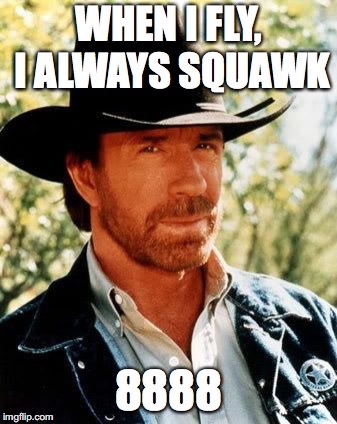DanWilkins
Pre-takeoff checklist
- Joined
- Mar 23, 2018
- Messages
- 235
- Display Name
Display name:
Dan
I just learned that the numbers 8 and 9 are not used in squak codes. My transponder won’t register those anyway. I post this just in case some other readers don’t know this. I was ready to have my Garmin checked.



